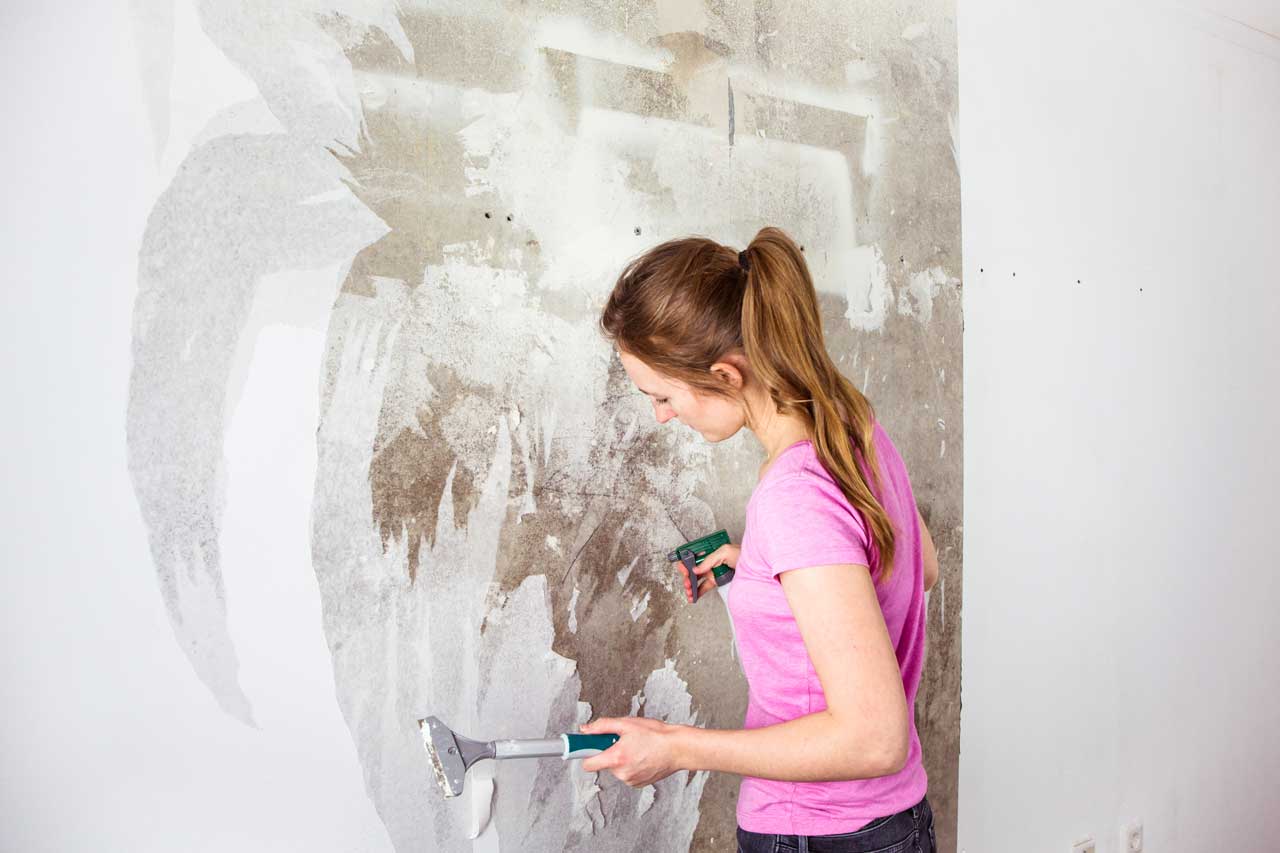Applying wallpaper over wallpaper? Pay attention to these things!
You can, of course, choose to remove old wallpaper when you apply a new layer of wallpaper. But sometimes it is also possible to glue new wallpaper over the old one. In that case, there are a few things to keep an eye on. In this article we highlight the most important do's and don'ts when applying wallpaper over wallpaper.
Remove old wallpaper?
A first question that arises when applying a new layer of wallpaper is whether you should remove the old wallpaper at all times. The answer to this question depends partly on the condition of the old wallpaper.
If there are many bumps or other irregularities in the old wallpaper, it is usually not a good idea to apply new wallpaper over the old one. The new wallpaper will not become nicely flat, warped and marred by ugly bumps.
Is the old layer of wallpaper still pretty smooth and even? Then wallpaper over wallpaper can be a good and easy option. It saves you a lot of work and results in a wall with beautiful photo wallpaper.


Types of wallpaper
The type of wallpaper also affects whether it is wise to apply new wallpaper over old wallpaper. Let's first take a look at the types of wallpaper that are available.
Fibreglass wallpaper
An ideal decorative solution to reinforce old walls and cover cracks. Fibreglass wallpaper comes in many structures. Think of motifs such as herringbone, squares or balls. Once you have applied it, you can easily paint the fibreglass wallpaper in the desired colour.
Paper or duplex wallpaper
This material consists of two layers of paper. This wallpaper is applied 'bumping', which means that the strips of wallpaper are applied against each other.
Non-woven wallpaper
This is most often used as a basis for photo wallpaper and is in fact paper wallpaper with an extra underlayer of nonwoven. The big advantage of non-woven wallpaper is that you don't have to apply glue to the paper but only to the wall.
Non-woven wallpaper does not expand either and can be removed relatively easily without the use of techniques such as steaming, scraping or soaking. Besides, non-woven wallpaper is extremely strong.
Non-woven wallpaper is also a lot easier to remove (can be removed dry) than split paper wallpaper, where the underlayer sometimes remains in place during removal.
Wallpaper over wallpaper?
The type of wallpaper determines to a large extent whether it is a good idea to apply the new wallpaper layer directly over the old one without removing the old one first. Because of its thickness and structure, paper wallpaper (duplex) is actually the only type of wallpaper that invariably produces really good results with wallpaper over wallpaper.
With the other types, in most cases it is better to remove (the underlayer of) the old wallpaper before applying a fresh new layer.
Non-woven wallpaper over old wallpaper
Non-woven wallpaper, the type of wallpaper that forms the basis for the photo wallpaper from our photo wallpaper collection, gives the best results if you first partially remove the old wallpaper. Non-woven wallpaper is stripable, which means that the top layer can be pulled loose from the bottom layer. After you have moistened and removed the top layer of the old wallpaper, you can apply the new non-woven wallpaper directly to the old underlayer.
Does the underlayer of the old non-woven wallpaper come loose in whole or in part during stripping? Then it is better to remove this layer completely. Otherwise the new wallpaper may start to blow, something you naturally want to avoid when applying a beautiful and sparkling new wall decor of photo wallpaper!
Conclusion
Whether you can apply new wallpaper over old wallpaper depends largely on the type of wallpaper. With duplex wallpaper, wallpaper over wallpaper is usually not a problem, but with other types of wallpaper it is advisable to be careful and follow the above tips and recommendations. This way, you are always assured of an even wall with eye-catching photo wallpaper!
